|
Hand-Painted Textiles A Practical Guide to the Art of Painting on Fabric Sarah Campbell ISBN 978-1-78994-064-0 Herbert Press www.bloomsbury.com I was first introduced to the work of Sarah Campbell at the Fashion and Textiles Museum exhibition Liberty in Fashion in 2015. The exhibition featured the work of the Collier Campbell Colllective, namely Sarah and her sister Susan Collier who had designed for Liberty in the 80s. I was struck at the time by the colour and vibrancy of their work and I was lucky enough to meet Sarah at the exhibition and interview her for the online magazine Workshop on the Web. She is a lovely person and the colour shines out of her. Since then I’ve followed Sarah and seen how her designs gain in popularity with those people who have an interest and passion in fabric design. She runs workshops at the Fashion and Textile Museum (and one I believe that's coming up at the V&A) and her work always looks so bright and joyful. I was very excited to hear that Herbert Press were publishing her book on painting fabrics and asked me to review it. I am interested in pattern and surface design and although I have been looking at print on paper more recently, this book has jolted me out of my reverie. I have dusted off my textile paints, fabric swatches and brushes and am raring to go. The most striking thing about this book is that it is, like Sarah, very joyful, free and playful. Sarah makes no secret of the fact that her approach to work is grounded very much in her extensive knowledge of composition, colour, pattern and balance. But she gives the reader the freedom to try things out under her expert guidance and start to think about how patterns work and how we can create them ourselves. The tools that Sarah uses are those that are easily available, such as foam brushes, sponges, brushes and the humble potato. You are encouraged to try all the different tools you have to see what kind of marks they make, how to be creative with them and let your imagination and sense of play take over. There are simple projects along the way for those of us that need some guidance about where to make the marks or provide ideas about what you can do with all the lovely fabrics you will have created after getting stuck in. The pervading sense of play as a starting point for creativity comes across very strongly in the book. By making that first mark, you have somewhere to progress from. And by gathering your materials, colours, different types of paint and enthusiasm, you can start to experiment with what you like, what works and how to combine the different techniques to start to create your own unique patterns. Whether they are small motifs to repeat or larger scale panoramas becomes entirely up to you. They are many swatches pictured so you wouldn’t have any problem getting inspiration if you didn’t know where to start and lots of projects to showcase all the new skills you have learned. This is a book for all from the absolute beginner to find a starting point to the confident textile artist who needs some more spontaneity in creativity. Using colour and pattern in this way is the universal panacea for a grey existence and I cannot wait to take my new creations out into the world.
0 Comments
Embroidery Atelier- Visions and Passions by Sue Rangeley Published by Textile Atelier Books www.textie-atelier.com ISBN 978-1-7397912-0-9 Price £28 Sue Rangeley is a master embroiderer whose career dates back to the 1970s when she created embroidered pieces for fashion designer Bill Gibb (her first choker was created for his winter collection in 1977). Her signature style is of delicate machine-embroidered florals produced to couture standards. Sue previously published her book Embroidered Originals (d4daisy books) in 2010 and has now followed it up with Embroidery Atelier. It expands on the work previously showcased and introduces new work on a series of themes. This book is divided into 4 sections – the 1960s, the past, nature and Places. Sue then explores each theme using ephemera, music, sketches and memories to develop and execute her finished pieces. They incorporate flowers, tendrils, leaves and lichen, heavily embroidered in dazzling colour palettes. Part of the development of the work is to share her Studio Techniques, which are summarized in their own chapter with photographs to illustrate. The joy of having a book like this is to look more closely at how the work is created and this is a great addition. Throughout the book, we see further glimpses of her studio practice, through her own floral artwork and fashion designs and works in progress. There is a plethora of threads in a range of colours and she refers to ‘A gorgeous spectrum of purple in over thirty spools of fine embroidery threads awaits’ which shows how complex and layered the stitching is. Along the way, we are given an insight into how Sue works. She works in a romantic world which is reflected in her prose and sits perfectly with the softness and fragility of her embroidery. She muses on why times past, people and places interest her and we see that Sue has a wealth of artistic and historical knowledge which all come together in her work. The work is exquisitely photographed by Michael Wicks and some of the larger couture garments are laid across a double-page spread so you can see more detail. Detail shots from all angles allow you see the pieces in 3D and appreciate how they are constructed in fine detail. When I first read Embroidered Originals when it was published in 2010, it was like stepping into a fairytale world of ethereal beauty. I remember poring over the flowers in frosted tones and marvelling at the stitching and beading. It was enchanting. As a companion piece, this book takes the wonder and runs with it, providing ample opportunity for close inspection. The themes will resonate with many readers as universally appealing, but my particular favourite was Sue’s interpretation of the Swinging Sixties. That period of time was heavily influenced by the Arts and Crafts movement, Pre-Raphaelites, Art Nouveau and Modernism which I find fascinating and for Sue to refer to people and times that are of particular interest drew me in. There have been several exhibitions celebrating this period of time (Mary Quant at the V&A; Beautiful People: the Boutique in 1960s Counterculture, Swinging London: A Lifestyle Revolution, both at the Fashion & Textile Museum) that I have enjoyed and so to see this period of time interpreted by Sue was joyful. For those of you who have Embroidered Originals, both books together will make a great pair. If you buy into William Morris’s adage about having nothing in your house that you do not know to be useful, or believe to be beautiful, then this book will fit right in. wwwTo buy Embroidery Atelier from Sue Rangeley's website, please click here All work is by Sue Rangeley and all photos are by Michael Wicks unless otherwise stated
Anyone who has seen Marian Jazmik’s incredibly detailed and organic dimensional pieces will have been hugely excited to read her first book. First of all, her huge enthusiasm for stitch, nature, textiles and experimentation makes this a wonderful read for anyone sharing these interests. I immediately felt drawn to Marian’s way of thinking upon reading that she comes back from holiday with hundreds of pictures of rocks and rusting objects and very few of her family. It’s nice to know you aren’t alone… I like Marian’s approach to her materials and how to get what she wants from them. She uses tools that a reader who has been following experimental textiles are most likely to have – soldering iron, heat gun, glue wire, wire and pliers and she gives a good foundation to using these her way. She then features the themes that we are most likely to have thousands of photos on our phones of, including trees, foliage and funghi. These are all the things giving us the textural inspiration that we need. And by showing us how she achieves her finished pieces using these as a starting point, it gives the reader a clear vision of how we can do the same. We can see inspirational photos and samples created and you are offered some more ideas with ‘What if…’ suggestions. Finished pieces show us how different materials and techniques can be combined to create dimensional works. There are a lot of different pieces for you to see how these can be combined and worked upon with many outcomes. I did enjoy the Lichen section as the pieces here were so light and ethereal. Mainly monochromatic or using muted tones, these pieces were rich and complex. Threads and beads add to the texture and these are pieces you could study for hours and always find something new and interesting about it.
Similarly for the Seedhead section, the natural forms which inspire the pieces give way to beautiful spherical work that are perfectly constructed. Having been able to see these in all their glory (courtesy of the exquisite photography by Michael Wicks), I have a new found admiration for Marian and her work. For those who would like to start with their own inspiration images taken from nature and don’t know where to start, there is so much to learn from this book. It’s a very exciting book that will have you rummaging through your drawers, heat gun in hand and finding a new use for all sorts of everyday items. Texture from Nature in Textile Art is published by Batsford books and thank you to them for allowing me to reproduce the photos for this review; photography by Michael Wicks Anne Kelly's most recent book is Textile Travels published by Batsford. There is wonderful quote from Peter Greenaway that starts Chapter 1 of Anne Kelly’s book, Textile Travels: ‘I’ve always been fascinated by maps and cartography. A map tells you where you’ve been, where you are, and where you’re going – in a sense it’s three tenses in one’. It’s a fabulous description of the book. It encapsulates Anne’s work and how she manages to capture all of these things in her creative expression of travel. It is a book that looks at how Anne’s life of travel has been poured into a celebration of family, place and time. We have all been forced to think about travel in a different way due to the Covid-19 pandemic but the book encourages the reader to think about places they’ve been and consider their current surroundings in a way that collectively we might not have previously done. Anne guides us in her own travels and creates a series of works both small and large, always innovative, to show us that an affinity to place can take many forms. What is wonderful about Anne’s work is that she can take the everyday object and transcend its ordinariness to something of beauty and touching. For example, London Collar Case uses a vintage case and is covered with lace and a tourist tea towel and for Anne, has strong reminders of her grandmother who lived in London. It’s such a simple idea and instructions are given on how to create a similar case but the end product is so rich with feeling and history that we can’t help but be drawn to it. You can see similar items such as London Satchel, Tree of Life case and Haberdashery Sewing Box. They are expertly assembled and the treasures inside so thoughtfully selected and stored. Maps also figure heavily and there are several projects using old maps, by using old tin boxes and maps (usually found in charity shops). These incorporate stitch and there are some beautiful folded books made this way, A Very Big Country and Kent Maps. As Anne layers her textile work with imagery, stitch and her personal response to a subject, so too we see the past and present in the piece. There’s a richness to the raw materials chosen, such as vintage textiles, old papers or drawing, tickets or image transfers but we can understand the history and sentiment of the finished pieces. My favourite detail in Self-Portrait was the text Anne had written about her childhood, one of which reads ‘and when I was a child I was thinking about colour’. Anne has also included some illustrious artists who have embraced the theme of travel and I particularly loved the inclusion of Richard McVetis’s London Light Abstraction, Julia Tselkova’s knitted mittens, Julian Rowe’s artist books Eden Bridges and Nineveh and Debbie Lyddon’s Sluice Creek Cloths Masts and Halyards. As we had seen in Anne’s previous book Textile Folk Art, she has an extensive collection of objects and souvenirs from her travels and childhood and it’s wonderful to see how these inspire different works. They have made me nostalgic for the all the collectibles from my childhood and the feelings about time and place that they will evoke (should I ever dare to hunt for them). Themes of childhood, family and home run through the book and at a time where we have been confined to home, hopefully this book has allowed people to embrace those feelings and think more about our place in the world. There is enough in the book for you to want to create your own pieces of history, whether from your own travels, or from what’s outside your door. It is a wonderful read, hugely inspiring and I found this book to be a warm hug of memory, place and where you heart lies. I also went to the exhibition at the time of Textile Nature’s launch, please see here for the exhibition I have reviewed some of Anne’s previous books here, so please follow these links: Textile Folk Art and Textile Nature I also went to the exhibition at the time of Textile Nature’s launch, please see here for the exhibition.
I would like to thank Batsford for letting me review this book. Credit: Textile Travels by Anne Kelly is published by Batsford. Artworks by Anne Kelly, photographed by Rachel Whiting
Sketchbooks can prove a contentious subject. There are those that do, those that don’t and those that dabble. Shelley Rhodes is definitely in the ‘those that do’ camp and she keeps such beautiful sketchbooks that you will find yourself coveting such prize specimens. Shelley Rhodes trained as a graphic designer. There’s a brief reference to it near the end of the book but this news brings everything into perspective. The clarity and purpose behind her explorations draw from the discipline of graphic design but run alongside the freedom of her artistic expression. It is these two elements coming together that creates such a beautiful selection of work. The book, Sketchbook Explorations, is an exploration not just of Shelley Rhodes’s own books but of how sketchbooks can aid and help develop an artistic practice. Whether being used as a visual diary of daily practice, for the development of particular pieces of work or experiments on themes, Shelley has a book for them all. By sharing these with the reader, it opens up the world of sketchbooks so that you can see how other artists use them and how you might best use them for yourself. Turns out, you can have more than one… The books incorporate drawing, colour, mixed-media, found objects, collections and photographs. They cover themes such as coastal and urban decay, holiday memories, or mark-making. The essence of each book is to find its purpose and run with it. So, the visual diaries of holidays become an artistic expression of the experience of place, may use found objects from that place to make marks or keep as a memento. Observations of the surroundings may be noted, colours or plants added or more abstract impressions sketched and painted. Found objects are not kept hidden away but arranged in collections or boxes, rearranged or stuck directly into the sketchbook pages (spiralbound books come in handy here for bulky pages). A range of different sketchbook types are demonstrated – bought books, made books, tag books or index cards that make up reference libraries, scrolls, fabric pages, and extra long ‘walk’ sketchbook pages. There are numerous ideas presented and you will see the world open up before you as the options available are laid out. There are also suggestions of how to add content to your books with mark-making, sketching exercises, writing, making tools, altering pages. So much that you cannot help but be inspired.
Shelley Rhodes’s work itself is awe-inspiring but she also has carefully chosen other fascinating artists to feature and share their work practices. This makes the book something of a powerhouse of sketchbook demonstrations with the addition of Debbie Lyddon, Helen Terry and Diana Harrison, particularly in the area of mark-making. For visual diaries and work development, Jean Draper, Gwen Hedley, Ines Seidel and Jan Miller all produce work that is exquisite as work in progress and clearly show how work evolves from what is often a simple idea. What impresses most about this book is the attention to detail and clarity of the work, the way the author and all artists compose their sketchbooks and are so attuned to their practice. The approach is intuitive but ordered with a clear purpose. Shelley Rhodes, amongst all the wonderful art and books, also reminds us that the sketchbooks can also be a private matter. We can choose what to show the world. This gives the reader the security to know that the sketchbook is allowed to be the place to make mistakes that no-one needs to know about. Artistic practice can be worked and perfected until you find your own way but if you need help in clearing the first hurdle, I cannot think of a better book to recommend. Stitched Textiles: Nature Stephanie Redfern ISBN 978-1-78221-452-6 Published by Search Press www.searchpress.com Price £15.99/ US$24.95 I am biased. I love the work of Stephanie Redfern and I think she is a wonderful artist. So despite the tardiness of my review (this book was published in 2018), I wholeheartedly embrace the delight that Stephanie has published a book on her work and approach. I'm thrilled to get the chance to review it. Stephanie’s work is notable for her use of paper, painted and marked, fabric, stitch and poetry that can be found in her wall hung pieces and art books. These meet to create uniquely beautiful, complex surfaces with a minimalist aesthetic. The book captures the essence of her approach to mixed-media through an exploration of her art practice and process. Often, the preparation stages described in many textile books are a way in to the projects or tutorials but Stephanie’s introduction to her techniques and processes are a valuable part of the book. Her approach to each piece of work is so artful and this is reflected in the development of ideas that are shown. Each step along the way is a lesson in composition and arrangement but laid out in such a clear way that it is presented as a user-friendly and inspiring way to work. If you are looking for inspiration on how to start a sketchbook or develop your own ideas, then this is perfect (and you haven’t even got to the projects at this point). There are some great tips about how to get yourself started – using a photo library to select images, using images you like, sketching out ideas and leading to design sheets. All these ideas and seeing how Steph approaches and presents them gives you ample inspiration on how to get started. What stands out is that you are encouraged in a practical and straightforward way – start with something you like, choose elements to develop, find a colour palette that works, don’t overcomplicate the design and preparation. All this will help a piece to move forward without you overwhelming yourself. As you get to the Projects, these are based on the broad theme of Nature but have a great range. Each one chooses a different topic presented in a different way – seahorses in a wallhanging, butterflies in a scroll book, a book of birds and Collections of beetles or fossils. Steph has a unique way of presenting her work and the way she cuts her collage elements make flowers, leaves and trees pop out of the page. My favourite element of design in the book is the sun featured in Light and Shade II. It is a small part of a stunning piece featuring a bird based on a Lady Amherst’s pheasant that has been composed in such a beautiful way (cut, stitched and embellished), that despite not being the focal point of the piece, it catches the eye and nestles in the brain. That is what you get with so much of Steph’s work – the little details that could stand alone as piece of art but sit quietly, waiting to be discovered. I love Steph’s work and am thrilled that I now have something else to pore over when I’m needing some inspiration.
I have created a gallery in a new blog post with photos of Steph’s work that I have taken in past exhibitions. Please click here to get there or look in my Blog posts.  Cas Holmes- Textile Landscape Painting with Cloth in Mixed Media Published by Batsford www.pavilionbooks.com UK £22.95; USA $29.95; Can $39.95 ISBN 978-1-84994-435-9 Cas explores how the notion of a traditional art subject, the landscape, is adapted for interpretation by textile artists. Cas has a strong affinity with nature. Her work in pieces such as 40 Yards, which was inspired by finding a piece of cloth with ’40 Yards’ printed on it and led to a series of work that mapped that area outside her home, and the Tree Lines studies which traced a path between Gillingham and Eccles, all draw on Cas’s experiences of the natural world. She works with the charity Plantlife and her Tea Flora Tales work was created to raise awareness of the work that they do. Textile Landscape therefore is a much richer book as a result of the deep love of nature and preserving our wildlife that Cas has. There are tutorials and exercises on how to screenprint, keep a sketchbook, create a simple stitchscape and creating a rolled/folded journal but these are the tools for working in the way that Cas does. What is fundamental to the book is the way that Cas and the other artists assimilate their landscapes and interpret that into their art through paint and stitch. This becomes the heart of the book and it is communicated in a beautifully poetic way. Cas talks about how we all build connections with our environment but the more you can translate those feelings in visual terms, the more you can express your sensibilities of place through textile art as “The transformation of ordinary fragments into extraordinary forms”. You can capture moments before they change with light, weather or the seasons or find objects that evoke a strong memory. The beauty of working in textiles and mixed media means that found objects, real plants, photographs and fabric can all be incorporated into pieces and will create new layers of meaning. Coupled with Cas coaching the reader into taking time to record both the physical observations and emotional reactions to where you are will create a truly personal response. The choices of other artists, such as Jan Beaney, Alison King and Jane Fairweather, perfectly reflects the ethos of the book. Marna Lunt expresses the artistic process beautifully: “The landscape is not simply about what your eyes pick up in front of you, it is hugely biased by the emotions you feel when sat surrounded by it.” By being tutored in the processes of recording information and translating that into stitch, the book leaves the reader yearning to explore their own connections to nature and how to communicate those emotions into a physical representation (not necessarily a reconstruction). It opens your eyes to the possibilities of artistic expression and invites you to explore how you respond to a landscape. I love the way that Cas’s work layers the physical fabric, paper, found objects and text with the reactions, memories and emotions and all these are held together with stitch. Textile Landscape is a complex, thought-provoking and multi-layered response to time and place as seen through the artist’s eyes but teaches us all how to look deeper in order to frame our own artistic vision. If you like Cas Holmes's work, please see my Gallery of her work here by clicking on the picture below:
Anne Kelly’s latest book Textile Folk Art takes a look at Folk Art from around the world and explores how works that are rooted in identity, childhood, family and community can shape the contemporary folk textiles of today. Acting as a practical and inspirational guide, we are set on path of discovery around the world with the author as our guide. Anne has gathered, assembled and curated a story of thoughts, feelings and memories of times past and present, people working then and now and intertwines it with her own work. The book is introduced by a photograph of her (Jewish) Grandmother as a child wearing traditional German dress and we learn of her family’s movement between countries as refugees. These and Anne’s own experiences of growing up in Canada, doing her first degree there and now living in the UK, a self-described immigrant in her adopted country, are strong influences that surface throughout the book. Her project Moving Memories (picture below) focuses in on this theme, as do her pieces Sophia Bianca and Zulema Alma. The reader has the opportunity to learn from the knowledge and objects that Anne has found along the way. Given her interest in travel, the Folk Art Tradition and her use of vintage and donated items, throughout the book you see how these experiences and interests have shaped the artist’s work. The subject matter in the book is divided into five major sections – Samplers, the Nordic influence, Travel and Memory, Small Worlds and Home and Childhood. They mingle the traditional with the contemporary with the choice of historical pieces chosen that sit alongside contemporary artists working today in a style that echoes the past. These artists range from established figures Jessie Chorley, Hannah Lamb, Mandy Pattullo to emerging artists such as Ellie Macdonald, Laura Marriott and Bella May Leonard. The choices are inspired, whether the thought-provoking Travelling Blanket work of Dijanne Cevaal, whose embroidery records travel without writing, to Nancy Nicholson’s beautiful patterned designs which reference Folk Art motifs and her mother’s designs from the 1960s. Each artist’s work is chosen to perfectly reflect the past and communicate the present to the observer. On Anne Kelly’s travels, whether from the traditional stitched samplers from the 18th Century, embroidery developed in yurts in Inner Mongolia or the creation and decoration of khadi cotton in West Bengal, we are invited to share in her discoveries and understand how a world history of Folk Art is embedded in her own work. This is what really shines through in the book. Pieces from her collection range from typography (leaflets, buttons and books), vintage haberdashery items, pincushions, Indian playing cards, samples of fabrics and embroidery, postcards and animals from all corners of the globe. Just seeing these items collected together in the pages require extra attention as close inspection reveals a wealth of covetable treasures. We also get to see the process of work that Anne’s work involves with a number of progress images from when the pieces are composed to their finished state, after they are machine embroidered with Anne’s signature stitch. The stitching brings all the layers together and binds them in a protective layer, distressing the surface whilst unifying the work. A sense of identity for each piece comes from the connection of motifs signifying identity, place and possession through stitch. It is a lovely way of understanding Anne Kelly’s approach to her own interpretation of Folk Art. By sharing her journeys into Folk Art history, you get a glimpse of the richness created by curiosity. It translates into textiles and embroidery and leaves the reader contemplating how many layers of learning, history and travel can be connected through stitch. Photography by Rachel Whiting; reproduced with kind permission from Batsford If you have enjoyed this review, please see my review for Textile Nature (reproduced with kind permission from Workshop on the Web) and photo galleries from the launch and exhibitions of this book. Please click on the photos below.
Jean Draper Stitch and Pattern Design and Technique for Pattern Textile Art Published by Batsford www.pavilionbooks.com ISBN 978-1-84994-7 Price £22.95 / US $29.95 / Can $39.95 Jean Draper’s new book, following on from Stitch and Structure (published by Batsford in 2013) focuses on using pattern in textile art. Jean looks at the origins of patterns that appeal to us, how these can be interpreted in stitch and studies how these patterns have been interpreted around the world in different cultures. It is an intelligent book that draws on art, science and mathematics and blends them together in the matter of pattern making. The premise of the book is that mankind is drawn to patterns to make sense of the chaos in the world. By finding a means of ordering the natural world around us, we can find stability and surety. And by finding a pattern, we can use it for artistic expression. The approach in the first part of the book is to look at the naturally occurring patterns in nature, explore where they are found, what their characteristics are and show how those patterns can be translated into stitch. It is helpful to see several different interpretations for each pattern using a variety of techniques. These may range from densely hand-stitched samples of concentric circles to dimensional frameworks dipped in paper pulp and stitched. Such a wide variety of examples draw not only from the author’s beautifully executed work but also draws on the experience of other notable textile artists. The focus of the book is on the author guiding the reader on how to develop their own interpretations and to that end, each sample’s process is explained. Starting with small ideas, leading to in-depth research and building up a plan of translating into stitch will provide a process for work of this nature. It is methodical and practical and is aimed to avoid being overwhelmed by an unfamiliar process. The use of Jean Draper’s annotated sketches, examples of experiments with pattern arrangements and the origins of line, symbols and patterns all contribute towards a more coherent foundation of knowledge in this area. Examples of works from around the world show us how culturally, approaches can differ. This is a design book not exclusively for textile artists but for anyone with an interest in the origins of pattern and its place in design. If you enjoy this book, look also at Jean Draper's previous book, published by Batsford, Stitch and Structure.
If you like Jean Draper's work, see also work by Double Trouble (Jan Beaney and Jean Littlejohn) and Pauline Verrinder. Fashion Embroidery Embroidery Techniques and Inspiration for Haute-Couture Clothing Jessica Jan Pile ISBN 978-1-84994-474-8 Price £25/ US $ Jessica Jane Pile is the Production Director of Hand & Lock, an embroidery atelier based in London which specialises in work for The Military, The Royal Family, Ecclesiastical and European fashion houses. She is in a perfect position to tutor the reader on fine detail embroidery and for those who wait eagerly for the new embroidered garments that Fashion Week unveils, then this book is for you. It’s what everyone who wants to push their embroidery skills and aim for the heights of Haute Couture should be reading.
The book would be most useful for aspiring fashion embroiderers. It provides the tools to get you started and provides examples of work by Hand & Lock and couture designers (such as Alexander McQueen, Oscar de le Renta and Elie Saab) to demonstrate how embroidery in couture pieces have been constructed. The book explores the difference between hand and machine embroidery, how these are achieved in fashion embroidery and how knowing this will enable you decide what embroidery is best for you. There are instructions on what materials you need to get started and how to set up a frame properly with the correct tension, how to develop and transfer a pattern and the basic hand embroidery stitches which form the basis of couture embroidery. There are not a huge number of stitches and the emphasis here is on getting the practice and using skill and imagination to produce innovative and eye-catching work. Once the basics are covered, more options are explored with silk shading, tambour beading and goldwork (for which Hand & Lock are most famous for). This is a wonderful book, beautifully illustrated with close-up photographs of couture embroidery. The author shares her expertise to explain how the featured work is constructed and gives the reader the sense that given some imagination and a working knowledge of the best techniques you can achieve anything. The Haute Couture embroidery included in the book shows you what you can aspire to. The instructions given are clear and practical and it is good to see a book that doesn’t treat fashion embroidery as a secret club that the select few are invited to join. If you are working on foundations of good technique and preparation, which are described in the book, then you are in the best position to start creating something fit for the catwalk. If you are interested in Hand & Lock, please see the following features that I have written about them: Hand & Lock feature for Workshop on the Web magazine here The Embellished Handbag event blog post here |
AuthorBook Reviews on a variety of arts-related subjects. Please see Book Review page for an index of subject matter. Archives
March 2023
Categories |
Proudly powered by Weebly


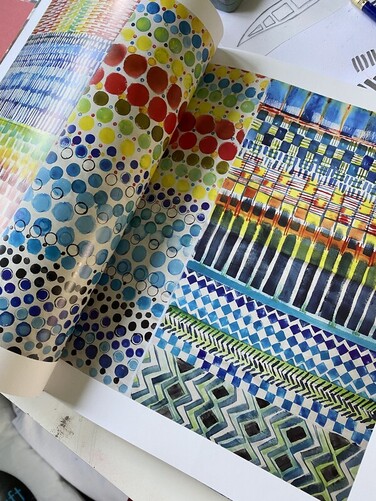


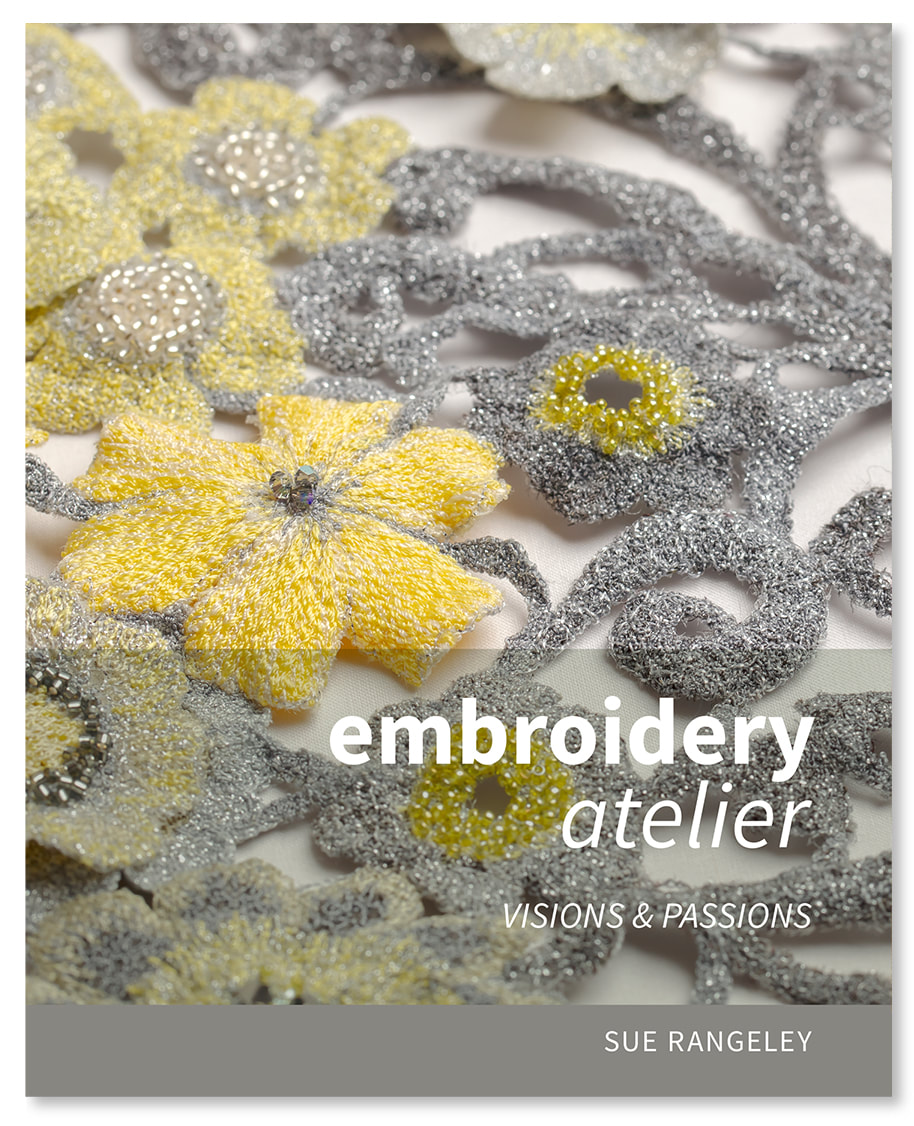

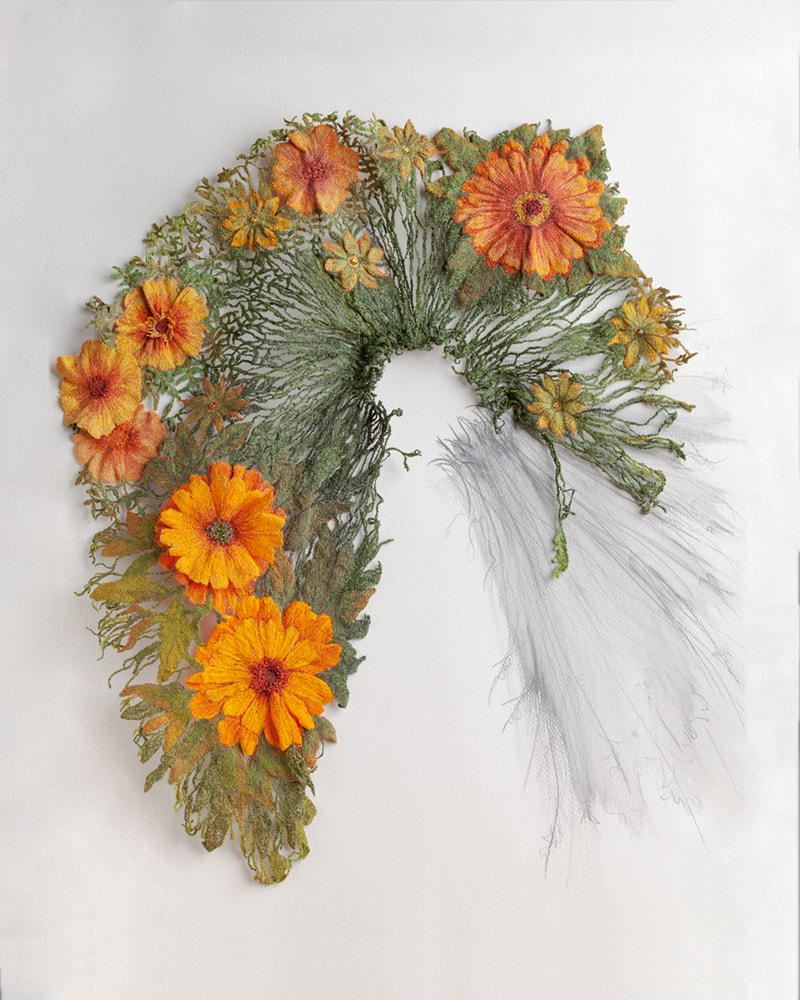





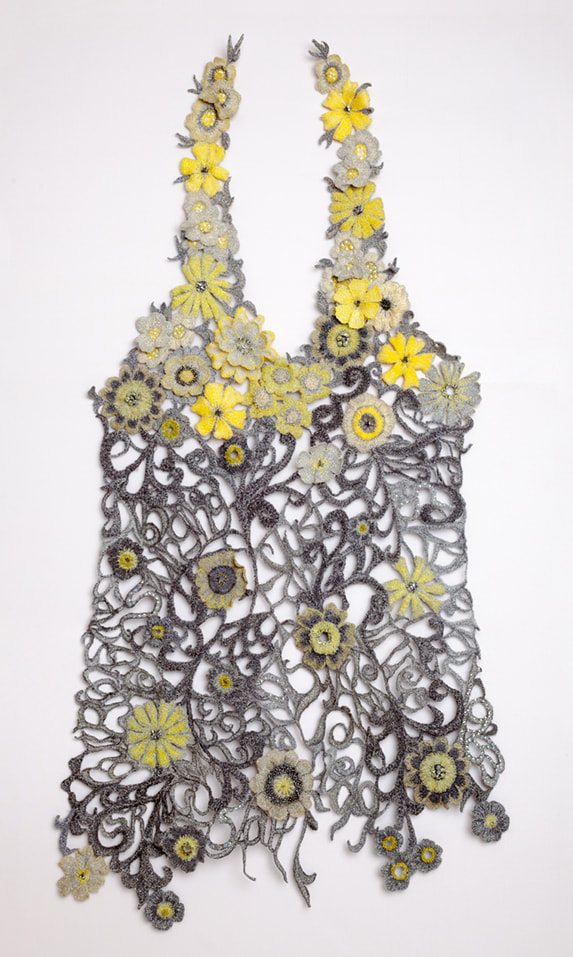




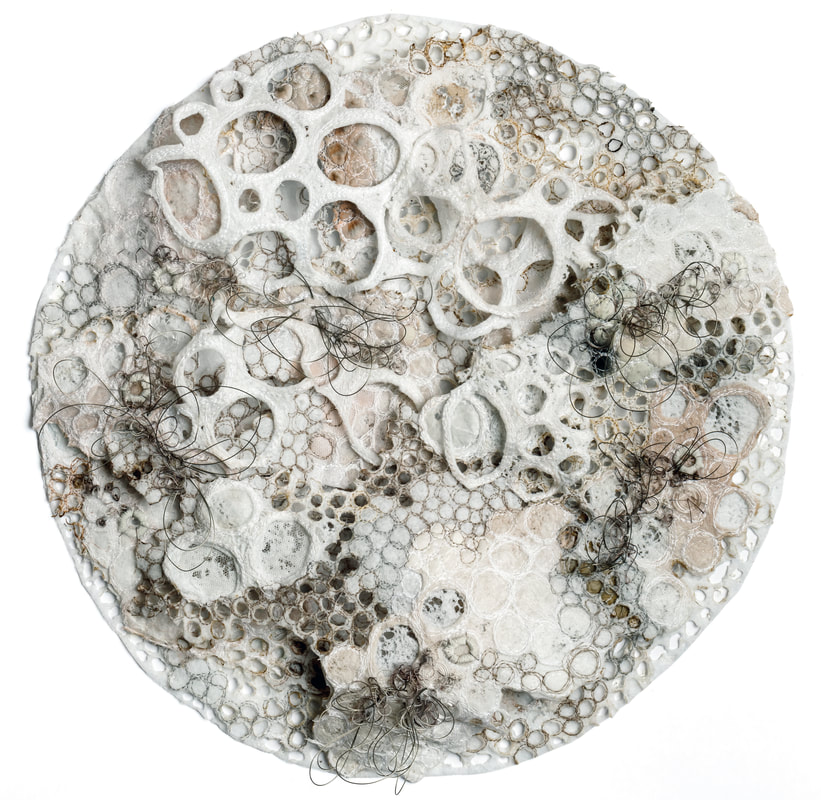
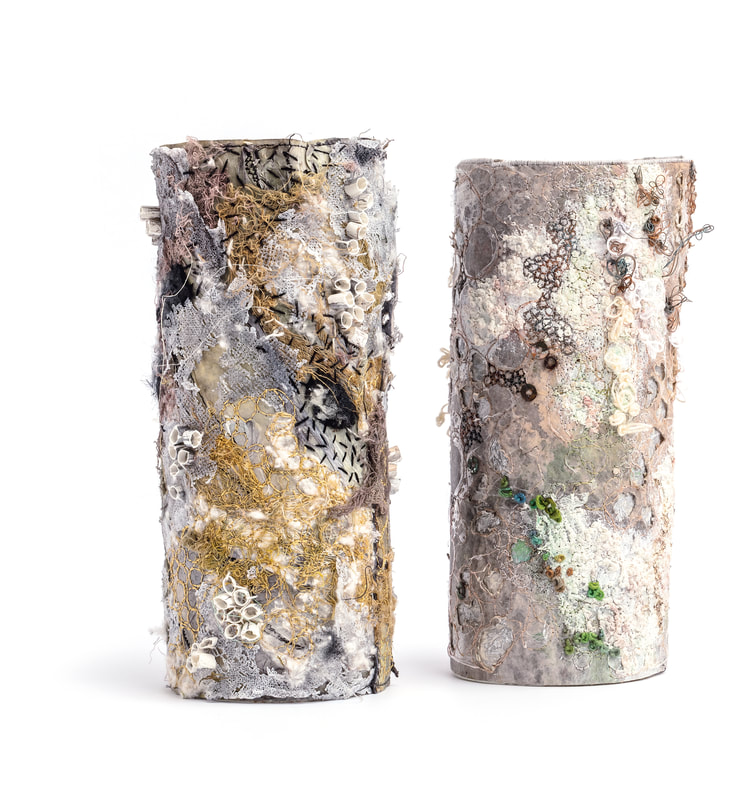


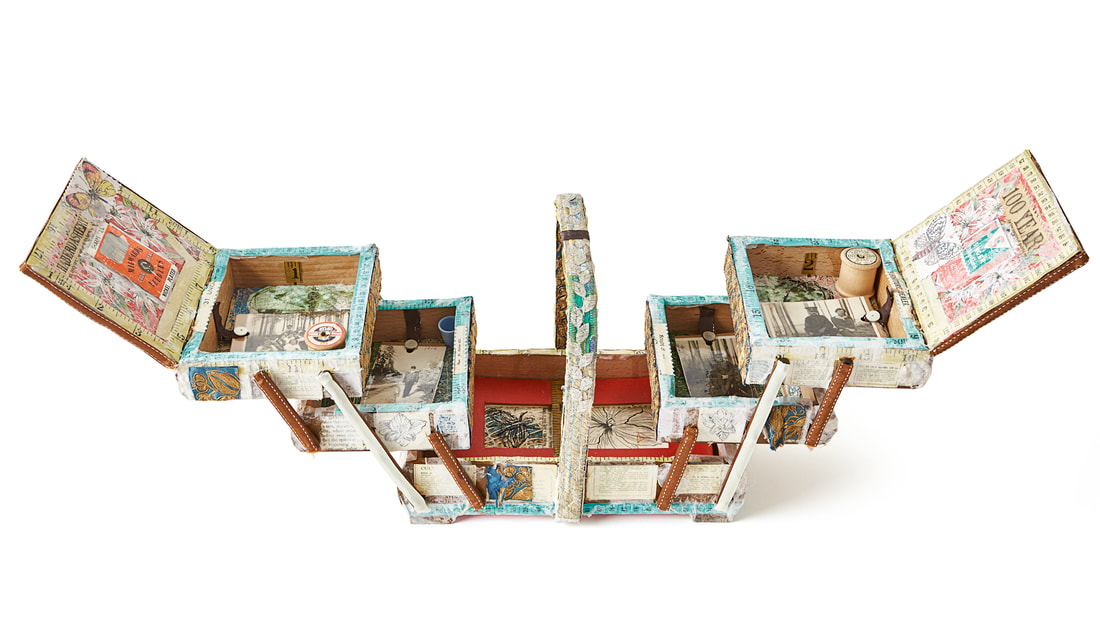
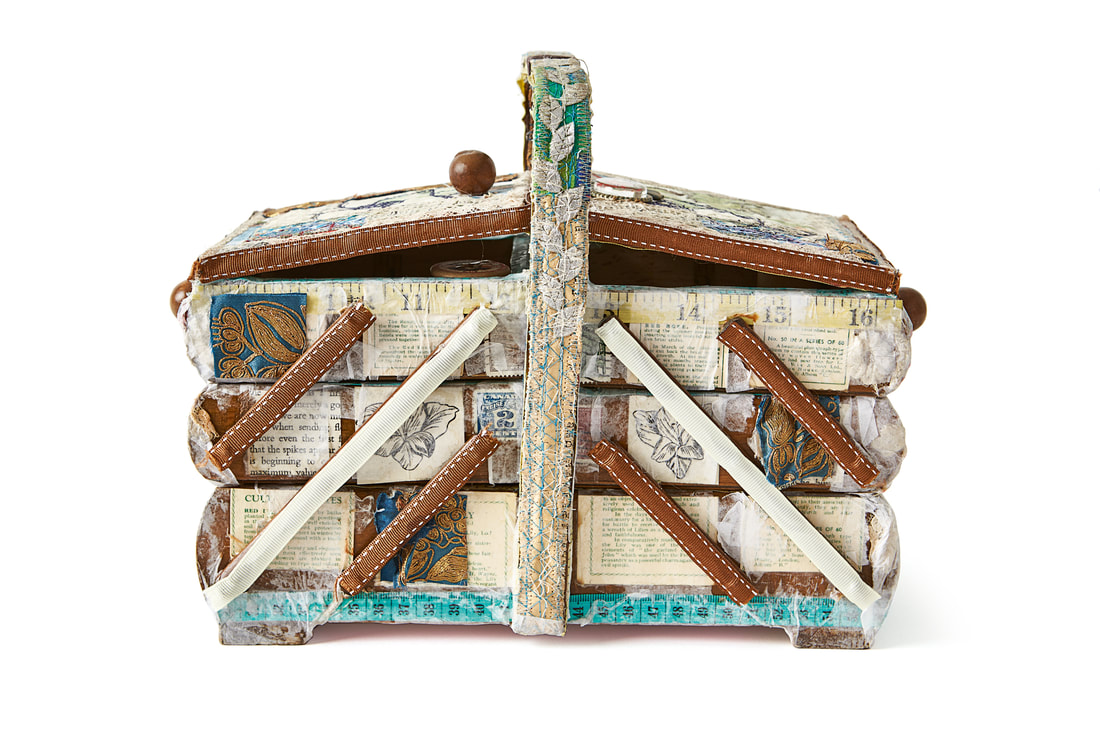
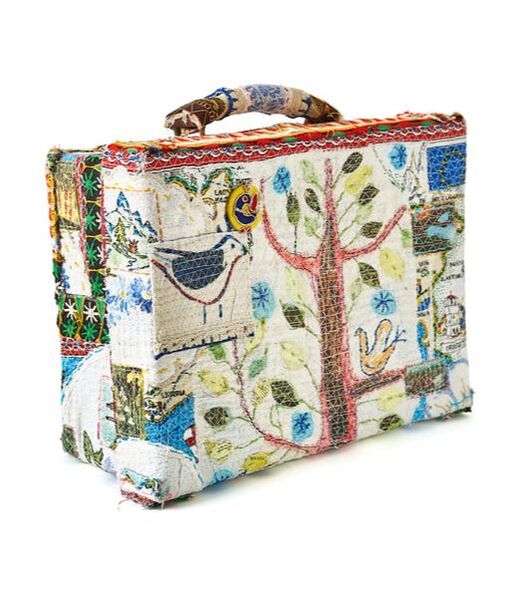
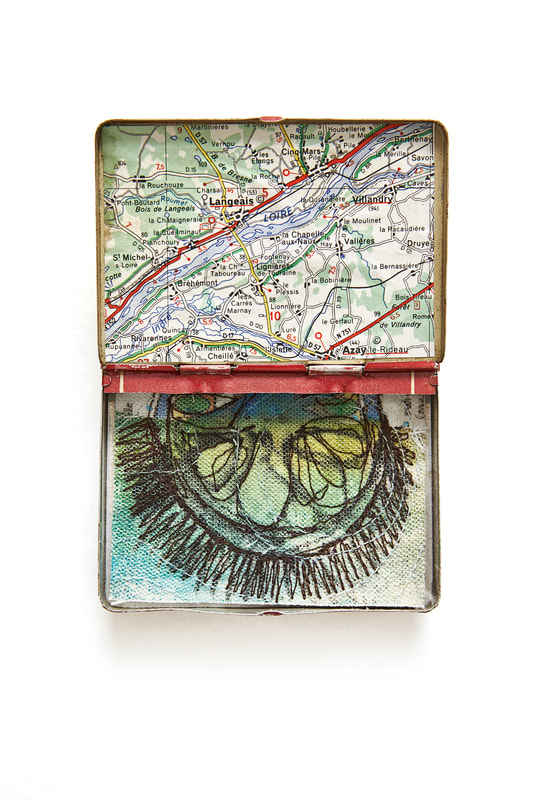
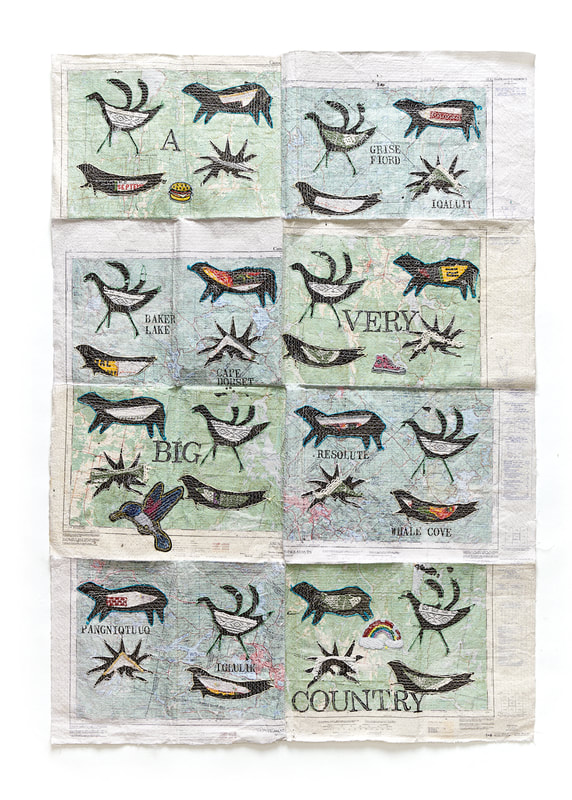
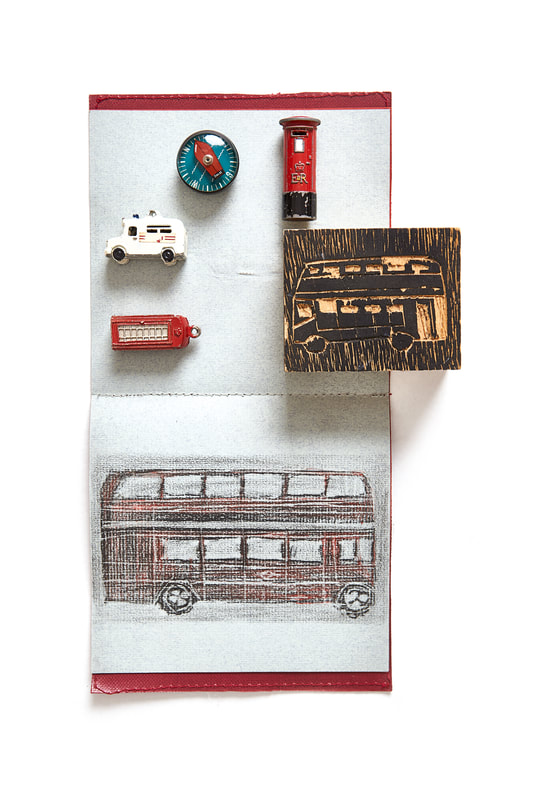





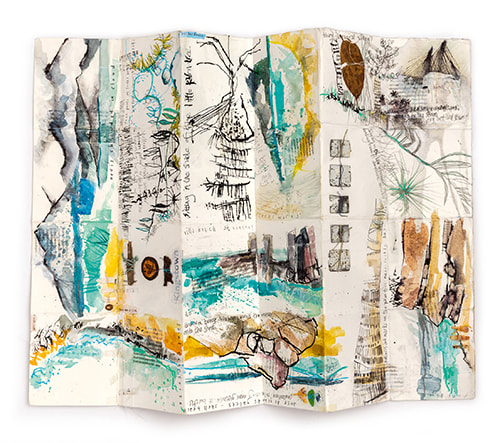



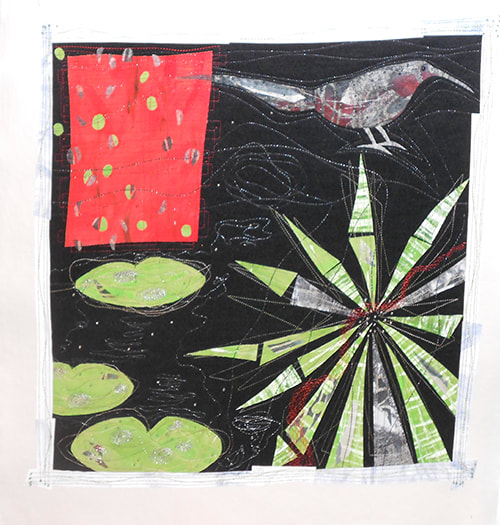


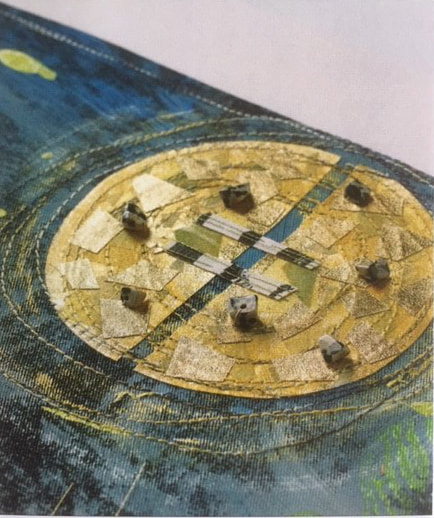
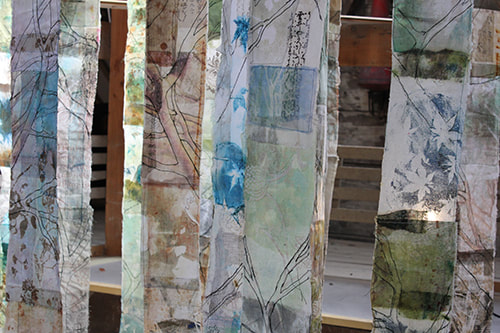
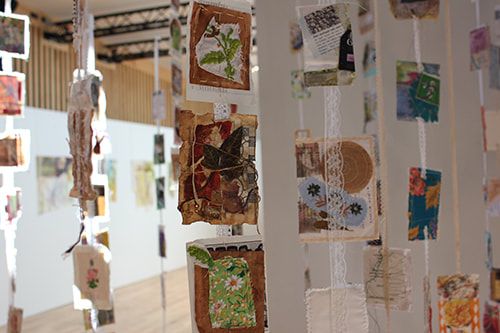

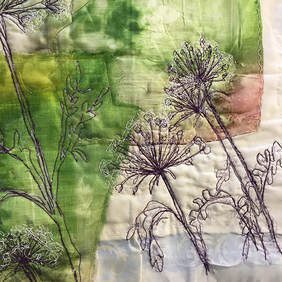

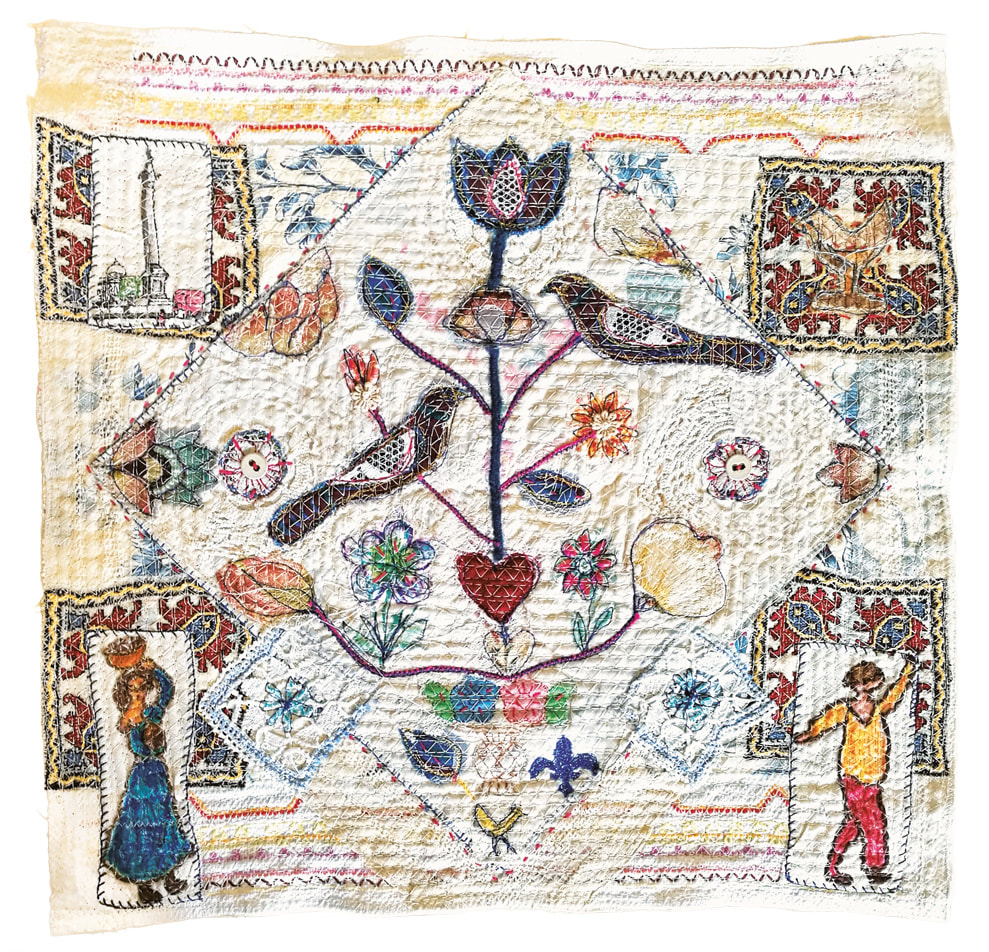
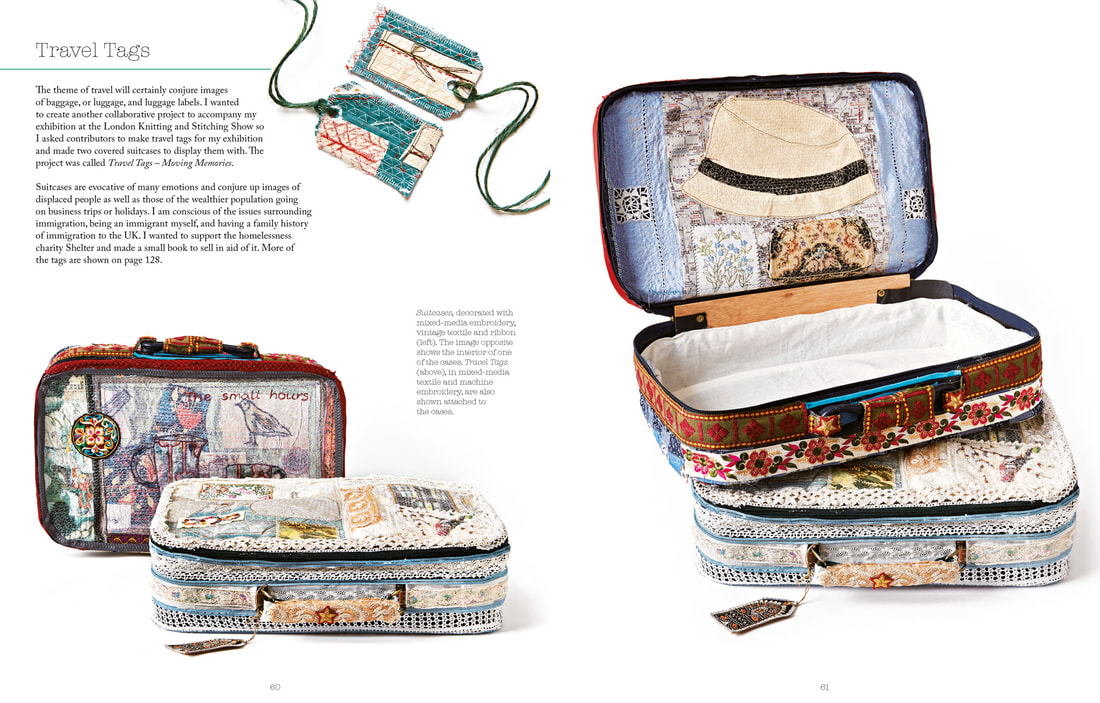




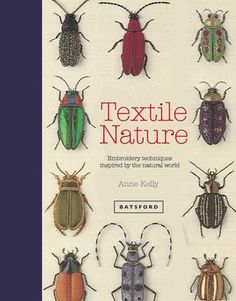

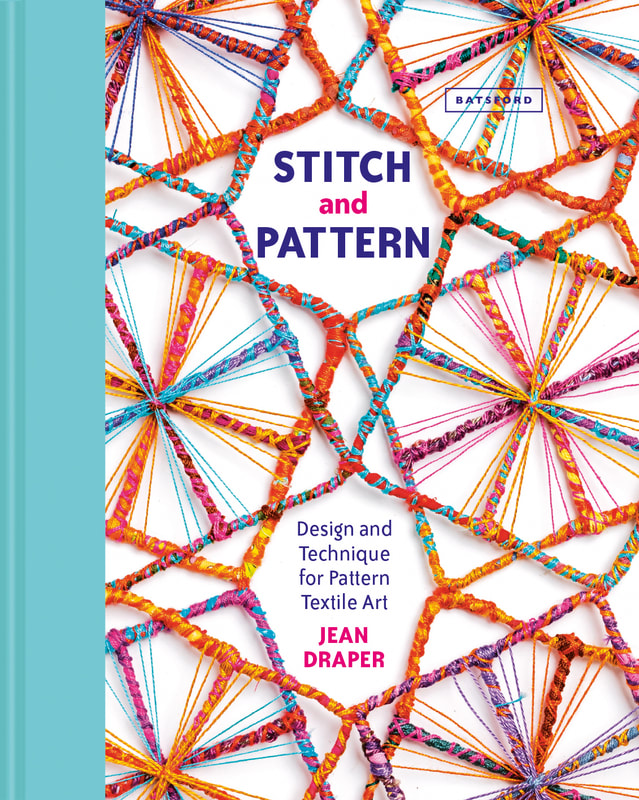

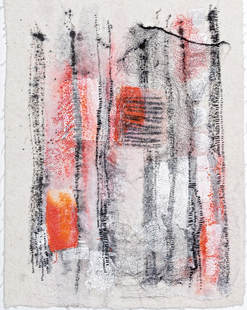
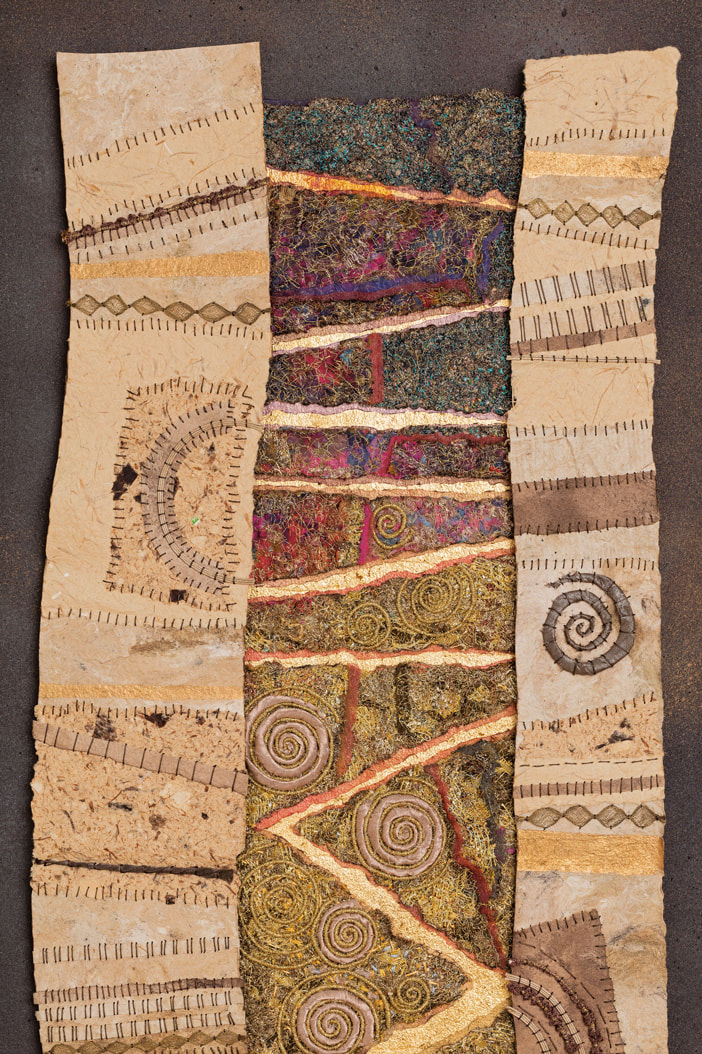
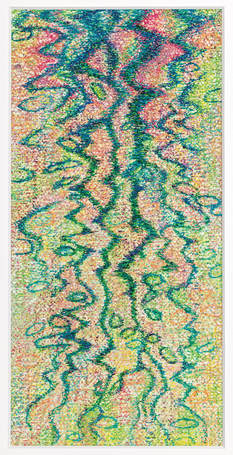


 RSS Feed
RSS Feed